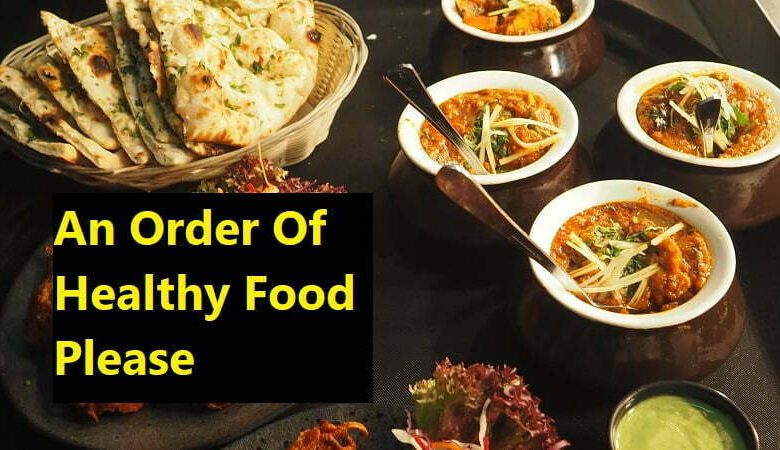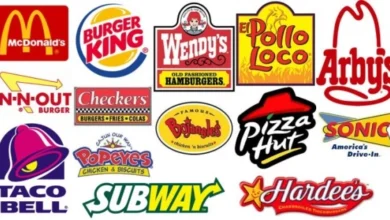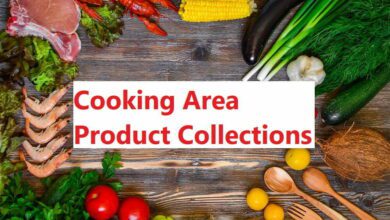
An Order Of Healthy Food Please
When you have no time to prepare your very own food, what do you do? You go out to your regional quick food electrical outlet (in submission to your youngsters’ choices), you go out to the food strip at the shopping mall, or you order take out.
Healthy and balanced consuming practices are vital to accomplishing a healthy and balanced mind as well as body.
Healthy and balanced consuming routines describe consuming dishes on a regular basis, consuming healthy dishes, and also consuming just what’s needed.
Healthy and balanced consuming practices do not include consuming hamburgers as well as french fries for lunch.
The Fast Food Culture
Some individuals do assume that it is healthy and balanced to have hamburgers as well as french fries for lunch. Marketing chatters have a whole lot to respond to for this.
In a globe loaded with convenience food as well as dining establishments, it is yet all-natural that the firms providing this food need to weaken individuals’s choice for home-cooked dishes or they will certainly come to be repetitive as well as not make any kind of earnings.
Huge food companies placed millions of bucks right into Television commercials that insist in not so numerous words that a dish consumed at a quick food is unique while consuming at residence with your household the dish your mommy prepared is absolutely nothing however average.
Such a turnaround of worths was assisted along by the faster speed of life, where individuals have no even more time to commit to preparing home-cooked dishes.
Individuals are constantly travelling or driving to function, participating in organization conferences, or perhaps holding one or 2 tasks.
What do you do if you are deceived right into assuming that dining establishment price as well as quick food preference much better than home-cooked food?
Regretfully, there’s additionally a hidden initiative to make individuals believe that food in dining establishment as well as quick foods are all healthy and balanced, that there’s truly not much distinction when you consume in or out.
As individuals remain to be pestered with information media promotions promoting the worth of junk food and also dining in a restaurant,
and also as individuals end up being much more active attempting to hang on to their tasks, a growing number of individuals quit food preparation and also start taking these commercials to heart.
Individuals have actually deserted healthy and also home-cooked dishes that require hrs of prep work for huge portions of calorie- and also fat-rich food that obtains dished out within mins.
The Diseased Nation
The success of the junk food market in developing a society that flourishes in junk food as well as dishes eaten in restaurants, our individuals’s wellness has actually been put on the equilibrium. Hence, America is currently an ailing country.
Occurrence of cardiovascular disease, diabetes mellitus as well as hypertension remains to increase as excessive weight comes to be much more common.
What I am stating is that a journey to the rapid food must be made just extremely rarely, not 3 times a week as a lot of individuals currently are will not to do.
An adjustment needs to be set up to bring back the days when there’s no question regarding what healthy and balanced food is and also where to discover it.
You go out to your neighborhood rapid food electrical outlet (in submission to your children’ choices), you go out to the food strip at the shopping mall, or you order take out.
In a globe filled up with quick food as well as dining establishments, it is however all-natural that the business offering up this food have to weaken individuals’s choice for home-cooked dishes or they will certainly end up being repetitive as well as not make any type of revenue.
What do you do if you are deceived right into assuming that dining establishment price as well as quick food preference much better than home-cooked food?
Unfortunately, there’s likewise a hidden initiative to make individuals believe that food in dining establishment as well as rapid foods are all healthy and balanced, that there’s actually not much distinction when you consume in or out.
The success of the quick food sector in developing a society that prospers in quick food and also dishes consumed out, our individuals’s wellness has actually been put on the equilibrium.
How To Find Really Healthy Food in the Grocery Store
Do you really know what is healthy food?
We all try and stick to choosing healthy items when grocery shopping or eating out, but how well do we really know our foods?
Discover how to find out about reading between the lines, what to look out for in labels and how to dine out healthily.
When shopping in your local supermarket, it’s very easy to be attracted to colourful aisles filled with crisps and chocolates. It can sometimes take a lot of will power to resist grabbing a few treats…especially if you are food shopping on an empty stomach!
So the logical choice is to head for the aisles that sell ‘healthy‘ food. But how genuinely healthy is the food that you are buying?
It looks healthy, it sounds healthy, but you may actually find that it contains ‘hidden’ fats, salts and sugars. In short, anything BUT healthy!
Fat free? Sugar free? Calorie free?
Phrases such as ‘fat free’ and sugar free’ sound great in theory, but a closer inspection may be needed. A claim such as ‘fat free’ usually means that in order for the item to be ‘fat free’, something else has to be added to make it taste edible.
So check the label at the back to see what has been added to make up for the lack of fat. The product could be significantly high in sugar, and so, even if the product is fat free, it will probably be packed full of calories.
The same goes for products boasting a low number of calories or no sugar at all. Again, check the back label because the fat content may be very high.
Also check to see whether the nutritional information relates to the portion size or if it’s per 100g. When cooking a meal, think in terms of portion size to get a better idea of how much fat and calories each person will really be consuming.
Vitamins, Supplements And The Importance Of Water In A Healthy Diet
If you are a person who is interested in developing an appropriate diet for health living, there are three items that you should include in your overall eating regimen:
— vitamins
— nutritional supplements
— water
The foundation of a diet for healthy living needs to be appropriate food choices. You need to eat an appropriate balance of fresh fruits, vegetables and low-fat meat products. You need to avoid food items that contain trans-fats as well as refined, processed sugars.
Once you have established the appropriate menus for your overall plan for healthy living, you will want to consider how vitamin and other nutritional supplements can support your food selections and choices.
It is vital to keep in mind that vitamins and nutritional supplements are not designed to replace healthy food choices. Rather, these products — as the moniker “supplement” indicates — are designed to supplement your basic, healthy food choices and selections.
Along with proper food choices and the addition of vitamins and nutritional supplements, drinking an appropriate amount is absolutely necessary to maintaining an appropriate weight and to pursuing a healthy diet, a diet for healthy living.
As a general rule of thumb, an adult who is not significantly overweight should consume eight 8-ounce glasses of water each and every day.
(Soft drinks, coffee, milk and other beverages are not to be utilized as part of the total water intake amount. However, some herbal, decaffeinated teas can be used towards your overall water intake count on a given day.)
A person who is overweight will need to consume more water.
Some experts suggest that (in addition to utilizing vitamins and nutritional supplements) a heavier person should take in not only the base eight glasses of water
daily but should also drink an additional 8-ounce glass for every ten pounds he or she weights over and above his or her “ideal weight.” Of course, if a person is morbidly obese, there is a line of water consumption that cannot be crossed.
You can only consume so much water — however, you do need to bear in mind that the more you weigh, the more water that you will need to drink each and every day.
Finally, in addition to using vitamins and nutritional supplements to enhance any workout or exercise regimen that you include in your overall healthy living plan or scheme, you need to increase your intake of water when you do exercise.
Advice on Choosing Health Food And Healthy Foods And Reading Nutrition Labels
Health food doesn’t need a definition, does it? We all know what health food is it’s yogurt and granola, whole-grain cereal and organically grown vegetables and fruit. It’s 100% natural, no preservatives or dyes, unadulterated, pure.
When you put all that together, you should have healthy food, yet all too often, what’s marketed as health food these days barely classifies as food, let alone health food.
Take a look at one of our favorite health food choices – yogurt. It hit supermarket shelves in the early seventies, though it had been available before that in health food stores and restaurants.
Real yogurt has two ingredients: milk (whole, skim or low fat) and live yogurt cultures. That’s health food – calcium, vitamin D, vitamin A, protein. Next time you’re at the supermarket, take a look at the dairy case.
You’ll find row after row of hyper-sweetened brightly colored rainbow swirled and candy-sprinkled yogurt packaged in ways that appeal to our littlest consumers – children.
Millions of parents buy the enticing packages, secure that because it’s yogurt, they’re buying food that’s healthy for their children.
One look at the label, though, and it’s clear that these kiddy yogurts (as well as most of the yogurt that’s marketed to adults) are a far cry from heath food. Some of the most popular yogurts for children contain anywhere from 3 to 10 added teaspoons of sugar.
Considering how many teaspoons of yogurt are in a single serving, you might as well hand your child the sugar bowl. In addition, most yogurts include “natural” ingredients that have little to do with health food.
Ingredients like pectin (to thicken yogurt), carrageenan (a seafood extract that gives some yogurts their body, and annatto (for color) add little nutritionally to yogurt. They’re in the mix to serve one main purpose: to help yogurt survive its trip from the factory to your table.
You’ll find the same situation with other foods that originally made their debut as health foods in the seventies. Granola has become granola bars with chocolate chips and gooey caramel.
Whole wheat flour is bleached and denuded of its flavorful kernels. Sunflower seeds are roasted in oil and salted. Even brown rice comes in the instant variety.
Healthy food not health food
The secret to feeding your family (and yourself) a healthful diet of healthy food is to read the labels. The United States Food &
Drug Administration has laid out strict guidelines for nutritional labeling of all food products. The nutrition label will tell you all you need to know to choose real health foods.
Some things to keep in mind when reading nutrition labels for health foods:
* In the ingredient’s portion of the nutrition label, ingredients are listed in order by amount. The ingredient that’s listed first is the main ingredient, followed by the next largest amount, etc.
* The nutrition facts label must list each of the required nutrients even if the food provides 0% of the recommended daily value.
* The nutrition facts label must list what portion of the food‘s calories is derived from fat, from sugar, from protein and from carbohydrates.
It will also break down the fat into saturated and unsaturated fat.
Reading labels on everything you feed your family is the best way to tell whether a food is really a health food – or just masquerading as one.
How To Choose A Healthy Food
Most of us are aware of the benefits of a balanced diet and healthy eating. But being aware of the benefits is only half of the solution.
You also need to know how to choose the foods that will be best for your health. Depending on your daily routine, you may or may not eat at home most of the time.
Start your day with a healthy and well balanced breakfast. Studies have shown that people who don’t eat a full breakfast tend to seek carbohydrate snacks all throughout the day, and are more prone to gaining weight.
Eating at home usually involves more meal preparation time, this is important because preparing a good meal takes a lot more time than simply eating some junk food.
If you can afford to prepare your meals at home, this can dramatically increase the quality of your meals, not only can you choose exactly what you eat, but you can choose how it is prepared and pick out the quality of the items yourself.
Any meal you eat, whether at home or while out should consist of all the basic food groups, balancing proteins, starches, greens and vegetables is a key factor to a healthy diet.
Your body needs all the different food groups in order to function properly, by balancing your meals you are ensuring your health and the quality of your life.
Choosing the food you eat based simply on the label at the supermarket is not always the best choice. Sure, a low fat or diet version of a favorite snack, treat or dessert may be a better option than the regular version, but is it the best option.
Look for healthier alternatives for snacking in between meals, low fat cereal bars and natural products, fruit and juice. It is not so much the amount you eat but rather what you eat that makes the difference.
Avoiding fatty foods and food with high quantities of sugar is also very important. Choose baked food instead of fried food, and adopt this healthier alternative when cooking at home as well.
When away from home and eating out, look for healthy alternatives. Fast food offers speedy advantages but often has no real nutritional value.
Stuffing yourself with useless calories will fill you up momentarily, but you will soon find you are hungry again, and this can often lead to a vicious cycle, leading to high levels of junk food intake per day.
Choose full meals whenever possible; look for whole wheat and organic products whenever you can. If you are on the run and need to eat as quickly as possible, look for the healthier alternatives to hotdogs and burgers.
Try natural sandwiches made on the spot, there are many natural fast foods that can be just as quick as the conventional ones, while providing much better quality to your diet.
The Permanente Medical Group,My Doctor,La Salud Permanente,eat healthy,good fats,olive or canola oil,healthy food list,
types of healthy food,benefits healthy food,unhealthy food,healthy food recipes,healthy food definition,healthy food meaning,pictures of healthy food,The Fast Food Culture






